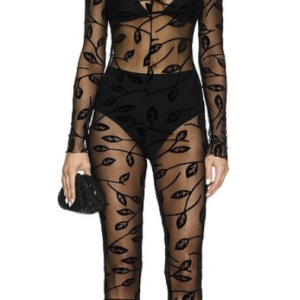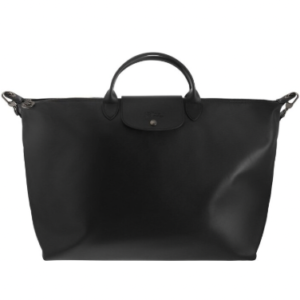
Understanding Creative Campaign Development
Creative campaign development is a vital component of modern marketing strategies, designed to establish an emotional connection between brands and their target audiences. This process involves the conceptualization, planning, and execution of innovative marketing initiatives that stand out in an increasingly saturated marketplace. By harnessing the power of imagination and originality, brands can craft campaigns that not only capture attention but also foster long-term loyalty among consumers.
At its core, creative campaign development revolves around understanding the preferences and behaviors of target demographics. Effective marketers conduct thorough research to identify key insights about their audience, including their values, interests, and pain points. By focusing on these elements, brands can develop messages that resonate deeply with consumers, thereby enhancing engagement and driving conversions. Creative campaigns are often rooted in storytelling, utilizing creative narratives that evoke emotions and establish a meaningful dialogue between the brand and its audience.
To execute an innovative marketing strategy, brands must embrace a blend of creativity and strategic thinking. Creative campaign development frequently involves brainstorming sessions, collaboration among cross-functional teams, and the utilization of various media channels to deliver consistent messaging. The integration of emerging technologies, social media platforms, and cutting-edge design elements plays a crucial role in amplifying the impact of a campaign. Furthermore, a focus on innovative concepts can lead to differentiation in the marketplace, allowing brands to rise above their competitors.
Ultimately, the effectiveness of a creative campaign lies in its ability to communicate a brand’s unique value proposition while simultaneously captivating its audience. By prioritizing originality and understanding the intricacies of consumer behavior, brands are better equipped to deliver campaigns that leave a lasting impression and foster brand loyalty. Creative campaign development, therefore, is not merely a marketing tactic; it is an indispensable art that shapes the future of branding in the contemporary landscape.
The Importance of Creative Campaigns
In the highly competitive landscape of modern marketing, creative campaign development has emerged as a crucial element for brands aiming to stand out and resonate with their target audiences. These unique advertising initiatives play a pivotal role in attracting new customers, enhancing brand loyalty, and ultimately driving sales. By leveraging innovative concepts and engaging narratives, companies can establish a distinct presence that not only captures attention but also promotes meaningful connections with consumers.
One of the key benefits of creative campaigns is their ability to foster an emotional connection between the brand and its audience. When consumers are emotionally engaged, they are more likely to develop a sense of loyalty and commitment to a brand. This emotional resonance is often achieved through storytelling, relatable characters, or compelling imagery. By weaving creativity into their campaigns, brands can evoke feelings that encourage consumers to share their experiences, thus amplifying the campaign’s reach and effectiveness.
Beyond attracting attention and building emotional bonds, well-crafted creative campaigns can lead to tangible outcomes such as increased sales. Research indicates that memorable advertisements are more effective in driving purchasing decisions. Creative campaign development not only enhances the visual appeal but also reinforces brand messaging, ensuring that consumers associate the campaign with the brand itself. This association can lead to a higher likelihood of trust, as consumers are more inclined to buy from brands they recognize and feel connected to.
Furthermore, in an era where consumers are constantly bombarded with information, creativity allows brands to differentiate themselves. A unique campaign can cut through the noise, offering consumers an engaging and refreshing experience. By investing in creative campaign strategies, brands not only enhance their visibility but also create an opportunity to communicate their values and mission effectively.
Strategies for Developing a Creative Campaign
Creative campaign development is a multifaceted process that requires careful consideration and a structured approach to ensure its effectiveness. One of the foundational strategies is engaging in brainstorming sessions. These sessions should be inclusive, welcoming diverse ideas from team members across various disciplines. Utilizing techniques such as mind mapping, free writing, and even role-playing can facilitate the flow of ideas. The goal is to create an environment where all contributions are valued, encouraging innovative thinking that can lead to unique campaign concepts.
Collaboration plays a crucial role in the success of a creative campaign. By bringing together individuals with different perspectives and expertise, teams can enhance the creative process. Feedback cycles are essential; regular check-ins allow for constructive criticism and refinement of ideas. It is important to foster an atmosphere where feedback is encouraged, as this can lead to a more robust final output. The iterative nature of collaboration can help shape initial ideas into compelling narratives, ready to capture an audience’s attention.
Aligning the creative campaign with the overarching brand message is imperative for coherence and impact. This alignment ensures that all elements of the campaign resonate with the brand’s identity and values. A well-crafted narrative should reflect the brand’s mission while also appealing to the target audience’s interests and emotions. To achieve this, campaign planners should perform thorough research on audience demographics and psychographics, enabling the development of tailored messages that connect with potential customers. By integrating audience insights into the creative process, brands can enhance their storytelling, making their campaigns both engaging and relevant.
Ultimately, the synthesis of brainstorming techniques, collaboration, and alignment with brand messaging are essential pillars of effective creative campaign development. Implementing these strategies can lead to innovative campaigns that not only stand out in a competitive landscape but also foster a genuine connection with the intended audience.
Growth Through Creative Campaigns
Creative campaign development serves as a vital tool for brands seeking to enhance their growth trajectory. By engaging audiences through innovative messaging and strategic outreach, brands can significantly increase their market share and visibility. Numerous case studies exemplify how unique campaigns have led to remarkable successes. For instance, one notable example is the “Share a Coke” campaign by Coca-Cola, which encouraged customers to find and share personalized bottles, resulting in a steep rise in brand engagement and sales. This campaign not only refreshed Coca-Cola’s image but also fostered a deeper emotional connection with consumers, showcasing the power of creative techniques in driving growth.
Another prominent illustration is Nike’s “Just Do It” campaign, which transcended mere marketing to embody a motivational philosophy. This approach helped Nike strengthen its brand identity while appealing to the competitive spirit of consumers. In both instances, creative campaign development was central to transforming traditional marketing strategies into compelling narratives that resonate with audiences. Consequently, brands that prioritize creativity are better positioned to adapt to market shifts and capture their audience’s attention, ultimately leading to growth.
Measuring the success of creative campaigns is crucial for understanding their impact on brand growth. Metrics such as market share increase, engagement rates, and conversion metrics offer valuable insights. Tools like A/B testing and customer surveys can assess the effectiveness of campaign messages and formats. Brands that continually analyze and adapt their campaigns based on data-driven insights can maximize their strategies for growth. This reflective approach not only ensures the longevity of creative efforts but also facilitates continuous improvement, thereby reinforcing the integral role of creativity in fostering brand success.
Elements of a Successful Creative Campaign
Successful creative campaign development hinges on several crucial elements, each playing a vital role in shaping the overall impact of the campaign. Foremost among these is the strength of the concept. A powerful idea serves as the foundation of the campaign, fostering a connection with the target audience. It is imperative that the concept is not only innovative but also aligns with the brand’s values and messaging. A well-crafted concept should inspire and engage, setting the tone for subsequent campaign components.
In tandem with a compelling concept, engaging visuals are essential to creating an effective campaign. Visual elements are often the first point of contact with the audience, making them crucial for grabbing attention. High-quality images, videos, and graphics should resonate with the audience and complement the campaign’s message. The interplay of colors, typography, and layout can significantly influence perception and engagement, making thoughtful design a priority in creative campaign development.
Additionally, compelling copy is vital to articulate the campaign message clearly and persuasively. The language used should evoke emotions and drive action, while remaining consistent with the brand’s voice. Effective copywriting not only conveys information but also creates a narrative that connects with the audience on a deeper level. This narrative is strengthened by integrating calls to action that encourage participation or response from potential customers.
Furthermore, effective distribution channels are crucial to ensure that the reaching the intended audience is executed well. Selecting the right platforms—be it social media, email marketing, or traditional outlets—is key to maximizing reach and engagement. Each channel should align with the campaign objectives and demographics of the target market, ensuring that the carefully orchestrated elements of the campaign reach their full potential.
Trends in Creative Campaigns
In recent years, the landscape of creative campaign development has undergone significant transformation, heavily influenced by technological advancements, evolving consumer behaviors, and a heightened awareness of sustainability. Understanding these trends is essential for brands aiming to craft impactful campaigns that resonate with their target audiences.
One of the most prominent trends in creative campaigns is the incorporation of advanced technology, including artificial intelligence, virtual reality, and augmented reality. These tools enable brands to engage their audiences in immersive and interactive ways, enhancing user experience and fostering a deeper connection. For instance, augmented reality features allow consumers to visualize products in their environments before making a purchase, leading to more informed decision-making and increased brand loyalty.
Moreover, the role of social media in creative campaign development cannot be overstated. Platforms such as Instagram, TikTok, and Snapchat offer brands the opportunity to connect with audiences through authentic storytelling and visually engaging content. The trend of influencer collaborations has gained traction, as influencers often act as trusted voices within specific niches, providing brands with a means to effectively reach and engage their target demographic. As audiences increasingly seek relatable content, brands that utilize social media thoughtfully can enhance their relevance and visibility in crowded market spaces.
Sustainability messaging also plays a crucial role in contemporary creative campaigns. Consumers are increasingly prioritizing environmentally responsible brands and products, prompting companies to integrate sustainability into their campaigns genuinely. This trend not only elevates brand integrity but also aligns with the growing expectations of consumers for brands to advocate for social and environmental causes. Emphasizing sustainable practices in creative campaign development can thus differentiate a brand and strengthen its connection with an increasingly conscious audience.
Overall, staying abreast of these trends is critical for brands seeking to drive innovation in their creative campaign development. By embracing technology, leveraging social media, and committing to sustainability, brands can create campaigns that are not only relevant but also meaningful to their audiences.
Case Studies of Successful Creative Campaigns in Fashion
In the realm of fashion, where brand differentiation is crucial, companies have harnessed the power of innovative creative campaign development to stand out. Nike, for instance, has consistently been a leader in this area, using compelling storytelling to connect with its audience. The “Just Do It” campaign, which transcended mere advertising to become a cultural phenomenon, exemplifies how Nike effectively uses motivational messages to resonate with consumers. By integrating narratives that emphasize perseverance and individuality, the brand has reinforced its identity as an instigator of athletic and personal achievement.
Gucci represents another powerful case study in creative campaign development. The brand’s recent campaigns often blend art with fashion in unorthodox ways, such as collaborating with contemporary artists and influencers that defy traditional boundaries. For example, their “Gucci Ghost” project transformed street art into high fashion, allowing the brand to appeal to a younger, more diverse audience. Such inventive approaches have not only enhanced consumer engagement but have also positioned Gucci as a trendsetter in the competitive fashion landscape.
Patagonia, known for its commitment to environmental sustainability, utilizes creative campaign development focused on social responsibility in its marketing strategies. The “Don’t Buy This Jacket” campaign is a striking example that urged consumers to consider the environmental impact of their purchases. By adopting such a counterintuitive approach, Patagonia reinforced its image as a responsible brand, effectively combining ethical underpinning with creative ingenuity. This not only attracted a loyal customer base but also sparked broader conversations around sustainability in fashion.
Through these examples, it is evident that successful creative campaigns in fashion not only elevate brand presence but also foster deeper connections with consumers, ultimately influencing their purchasing decisions and shaping brand perception.
Overcoming Challenges in Campaign Development
Creative campaign development presents numerous challenges for brands, which can significantly affect the effectiveness and impact of their advertising efforts. Among these hurdles, budget constraints are often a prevalent issue that limits the scope and creativity of campaigns. Brands may find it difficult to allocate sufficient funds for research, design, and distribution, ultimately leading to underwhelming campaign outcomes. To navigate these financial constraints, brands can prioritize spending on the most impactful elements of the campaign, while also exploring cost-effective alternatives such as leveraging digital platforms for outreach and utilizing user-generated content to enhance engagement without extensive investment.
Another significant challenge in the creative campaign development process is encountering creative blocks. These mental hurdles can stifle innovation, making it difficult for teams to generate fresh ideas that resonate with their target audience. To combat this, brands can implement brainstorming sessions that encourage free-flowing ideas and foster collaboration among diverse team members, drawing inspiration from different perspectives. Additionally, allowing time for breaks or taking inspiration from unrelated industries can help rejuvenate creativity. Engaging with external consultants or tapping into customer feedback can also provide new insights to invigorate the creative process.
Market saturation represents yet another obstacle that brands must overcome in their campaign efforts. With numerous companies vying for consumer attention, standing out in a crowded marketplace can be daunting. To achieve differentiation, brands must focus on identifying their unique value propositions and communicate them clearly through targeted messaging. Utilizing innovative storytelling techniques can help capture audience interest, while keeping true to brand values. By developing campaigns that are not only visually appealing but also emotionally resonant, brands can enhance their chances of leaving a lasting impression in a competitive environment.
Conclusion
In reviewing the key components of effective creative campaign development, it becomes clear that innovative strategies serve not just as marketing tools, but as fundamental pillars for brand success. Engaging audiences through thoughtfully crafted campaigns allows brands to resonate on a deeper level, fostering loyalty and enhancing overall customer relations. By embracing creativity in their campaign strategies, brands can differentiate themselves in an increasingly competitive marketplace.
The process of developing a creative campaign involves understanding the nuances of the target audience, exploring various forms of messaging, and utilizing compelling visuals and storytelling techniques. This approach not only captures attention but also encourages engagement, making the campaign memorable and effective. The integration of creative concepts into brand messaging promotes alignment with the brand’s values, further solidifying the connection between consumers and the brand.
<pfurthermore, a=”” adapting=”” an=”” analyze=”” and=”” are=”” as=”” audience=”” better=”” brands=”” campaign=”” campaigns=”” can=”” continuously=”” creative=”” development=”” effort.<pin a=”” also=”” and=”” aspect=”” aspiring=”” audience,=”” branding.




